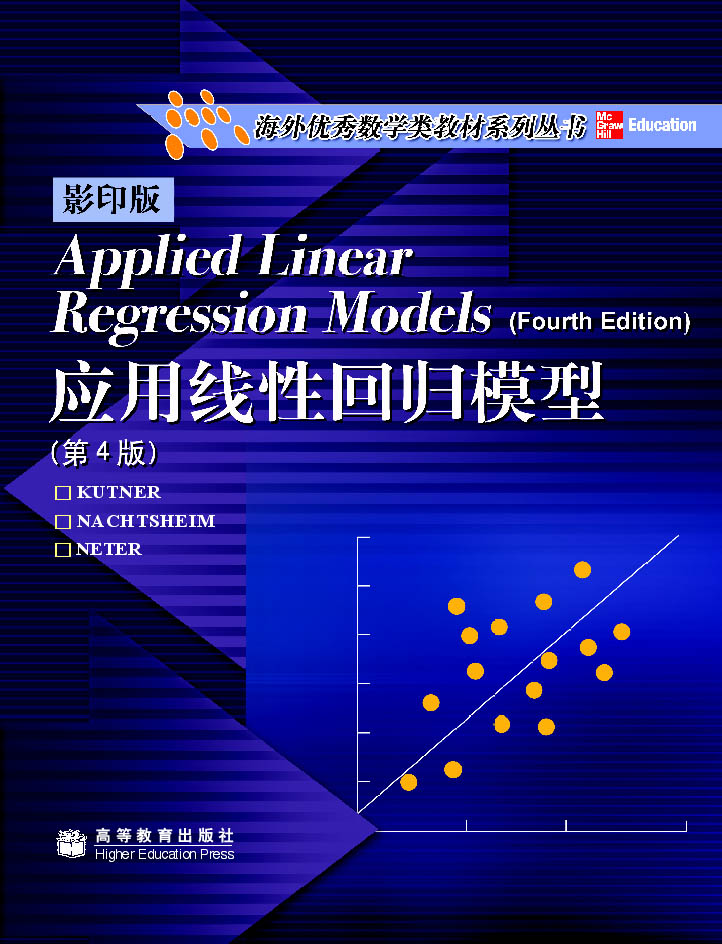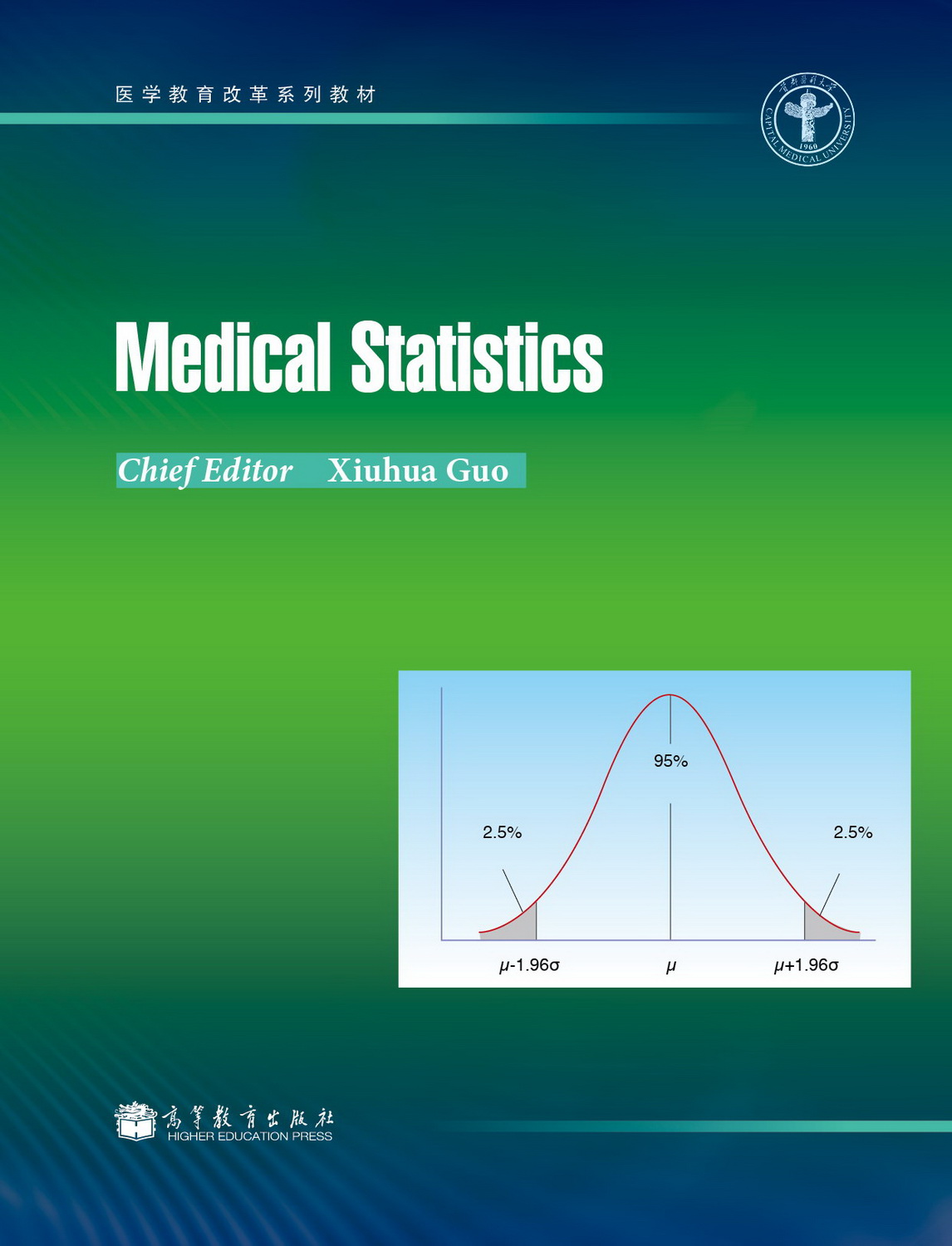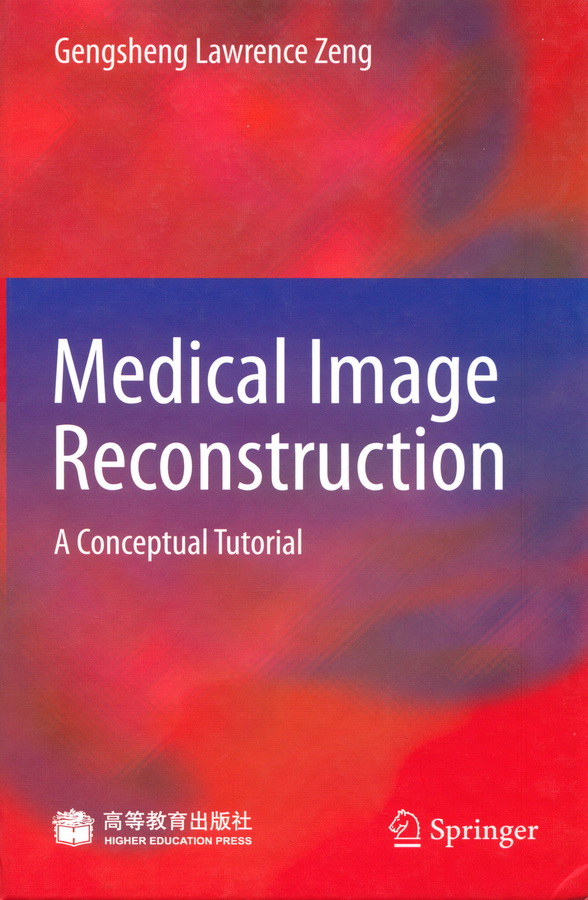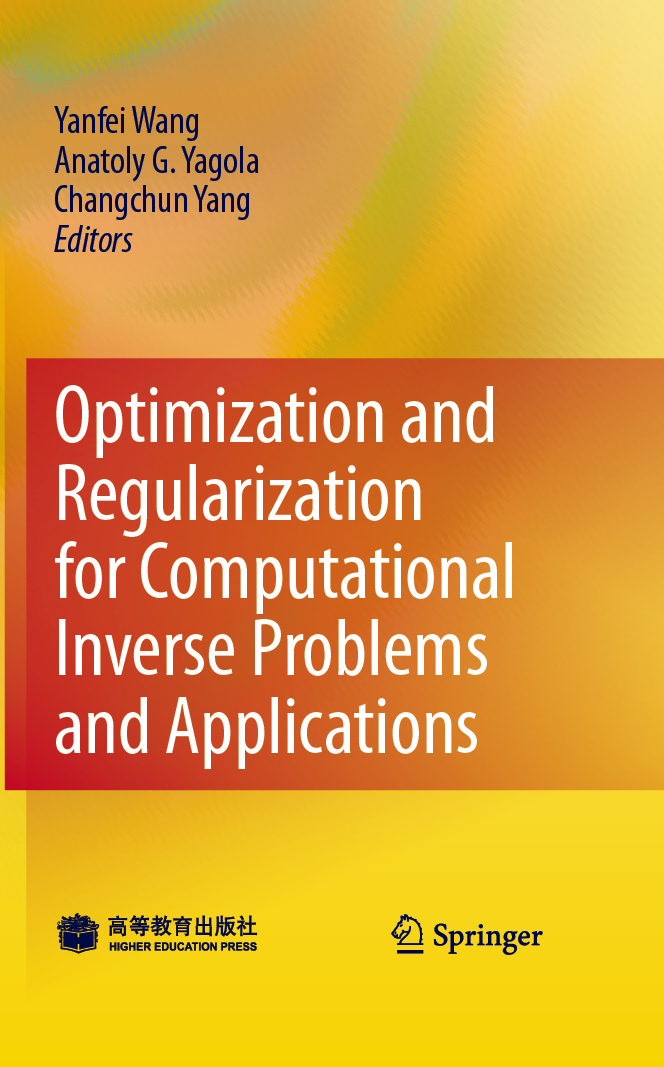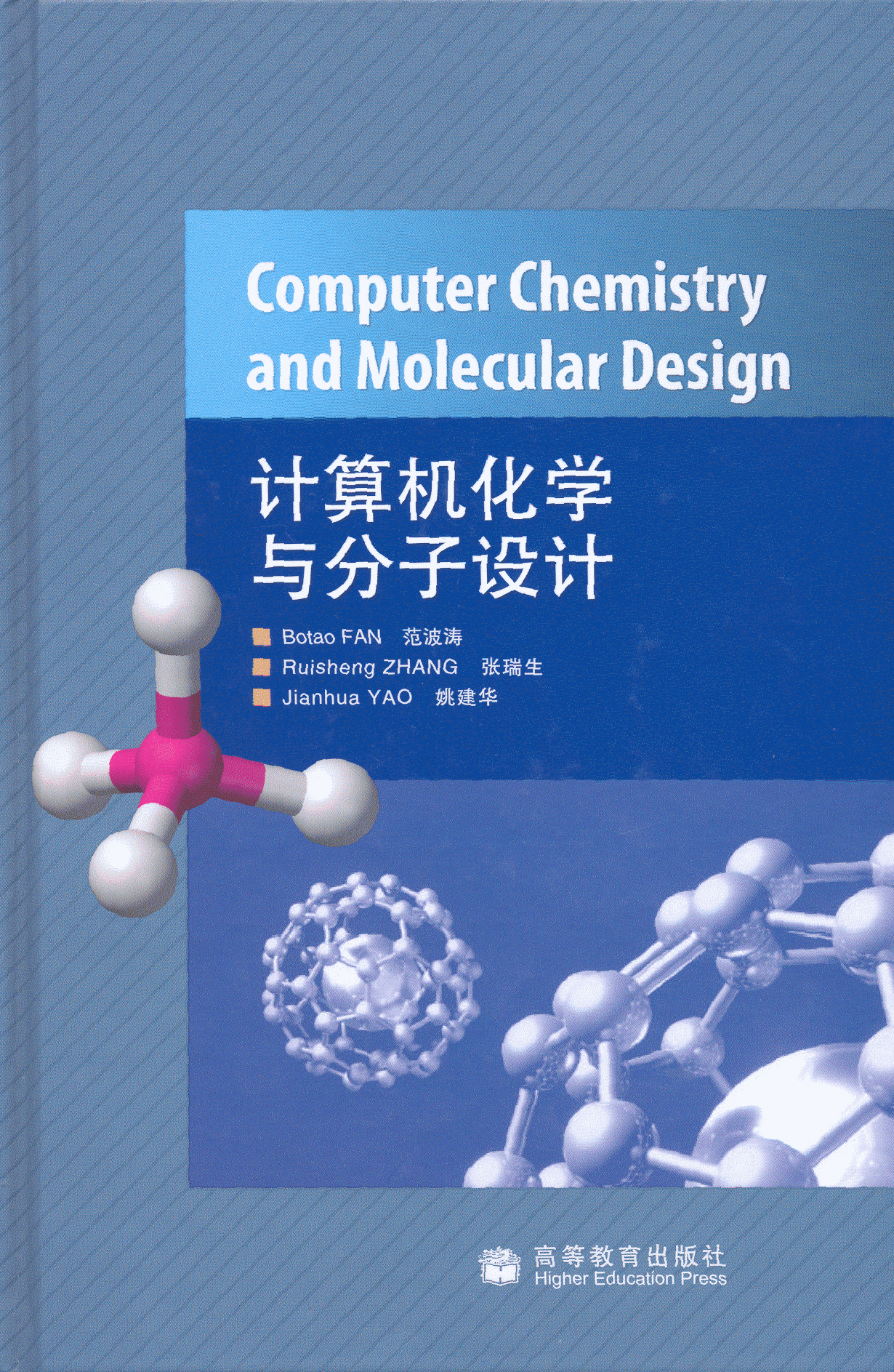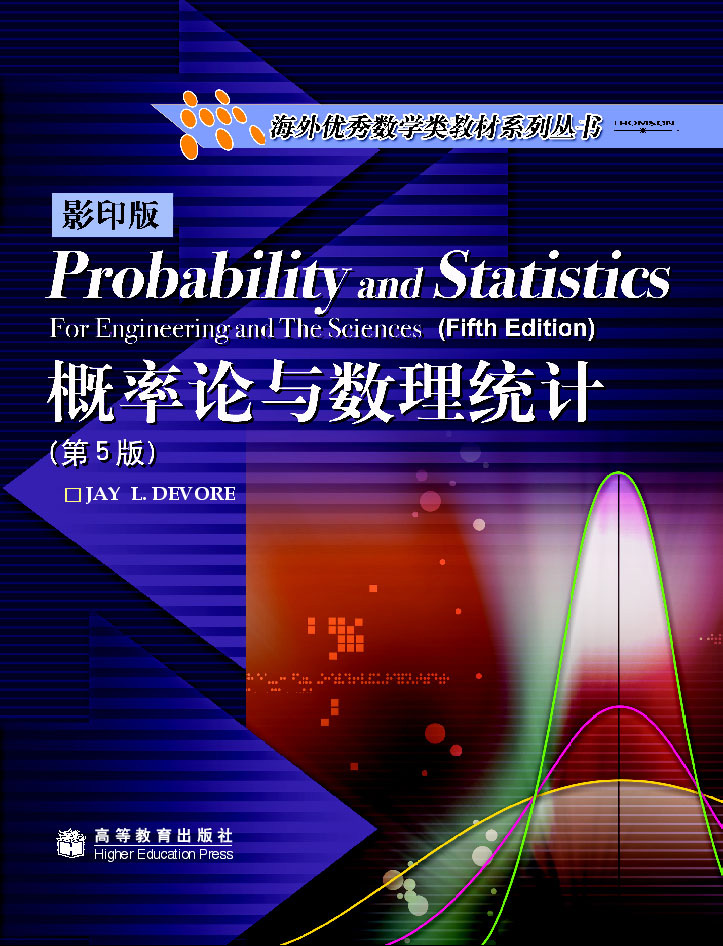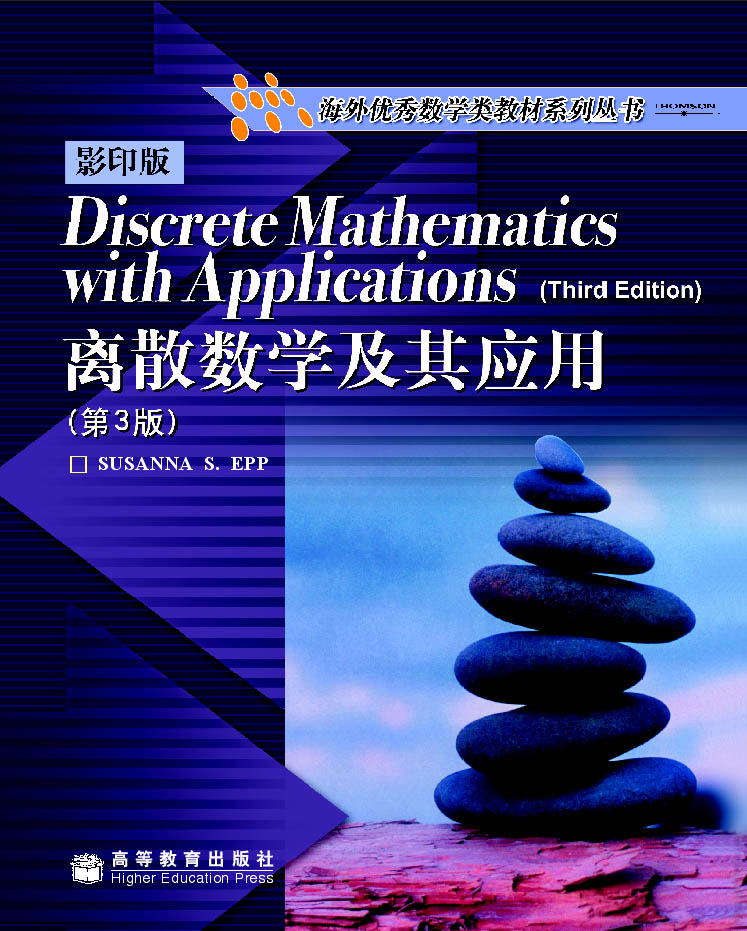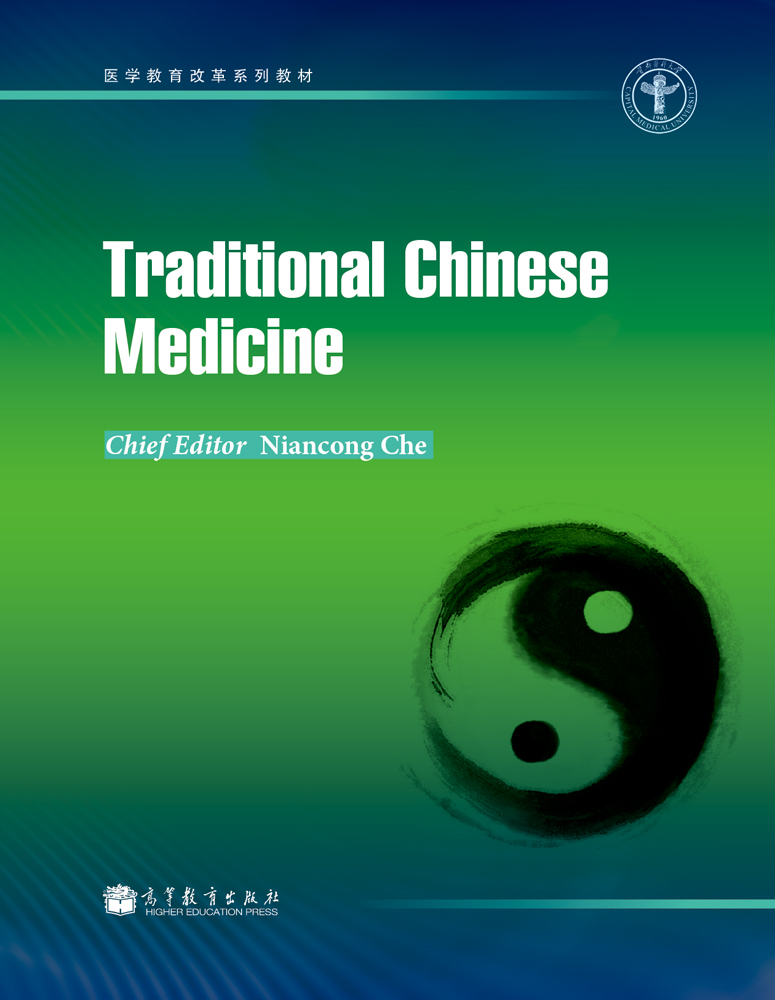应用线性回归模型(第4版)(附光盘1片)(影印版) / 海外优秀数学类教材系列丛书
作者: Kutner
出版时间:2005-02-28
出版社:高等教育出版社
- 高等教育出版社
- 9787040163803
- 1
- 248379
- 平装
- 16开
- 2005-02-28
- 1000
- 701
PART ONE SIMPLE LINEAR REGRESSION
Chapter Linear Regression with One Predictor Variable
1.1 Relations between Variables
Functional Relation between Two
Variables
Statistical Relation between Two Variables
1.2 Regression Models and Their Uses
Historical Origins
Basic Concepts
Construction of Regression Models
Uses of Regression Analysis
Regression and Causality
Use of Computers
1.3 Simple Linear Regression Model with Distribution of Error Terms Unspecified
Formal Statement of Model
Important Features of Model
Meaning of Regression Parameters
Alternative Versions of Regression Model
1.4 Data for Regression Analysis
Observational Data
Experimental Data
Completely Randomized Design
1.5 Overview of Steps in Regression Analysis
1.6 Estimation of Regression Function
Method of Least Squares
Point Estimation of Mean Response
Residuals
Properties of Fitted Regression Line
1.7 Estimation of Error Terms Variance σ2
Point Estimator of σ2
1.8 Normal Error Regression Model
Model
Estimation of Parameters by Method of Maximum Likelihood
Cited References
Problems
Exercises
Projects
Chapter 2 Inferences in Regression and Correlation Analysis
2.1 Inferences Concerning β1
Sampling Distribution of b1
Sampling Distribution of(b1—β1)/s {b1}
Confidence Interval for β1
Tests Concerning β1
2.2 Inferences Concerning β0
Sampling Distribution of b0
Sampling Distribution of (b0—β0)/s{b0}
Confidence Interval for β0
2.3 Some Considerations on Making Inferences Concerning β0 and β1
Effects of Departures from Normality
Interpretation of Confidence Coefficient and Risks of Errors
Spacing of the X Levels
Power of Tests
2.4 Interval Estimation of E{Yh}
Sampling Distribution of ●h
Sampling Distribution of (●h-E{Yh})/s{●h}
Confidence Interval for E{Yh}
2.5 Prediction of New Observation
Prediction Interval for Yh(new) when
Parameters Known
Prediction Interval for Yh(new) when
Parameters Unknown
Prediction of Mean of m New Observations for Given Xh
2.6 Confidence Band for Regression Line
2.7 Analysis of Variance Approach to Regression Analysis
Partitioning of Total Sum of Squares
Breakdown of Degrees of Freedom
Mean Squares
Analysis of Variance Table
Expected Mean Squares
F Test of β1=0 versus β≠0
2.8 General Linear Test Approach
Full Model
Reduced Model
Test Statistic
Summary
2.9 Descriptive Measures of Linear Association between X and Y
Coefficient of Determination
Limitations of R2
Coefficient of Correlation
2.10 Considerations in Applying Regression Analysis
2.11 Normal Correlation Models
Distinction between Regression and
Correlation Model
Bivariate Normal Distribution
Conditional Inferences
Inferences on Correlation Coefficients
Spearman Rank Correlation Coefficient
Cited References
Problems
Exercises
Projects
Chapter 3 Diagnostics and Remedial Measures
3.1 Diagnostics for Predictor Variable
3.2 Residuals
Properties of Residuals
Semistudentized Residuals
Departures from Model to Be Studied by Residuals
3.3 Diagnostics for Residuals
Nonlinearity of Regression Function
Nonconstancy of Error Variance
Presence of Outliers
Nonindependence of Error Terms
Nonnormality of Error Terms
Omission of Important Predictor
Variables
Some Final Comments
3.4 Overview of Tests Involving Residuals
Tests for Randomness
Tests for Constancy of Variance
Tests for Outliers
Tests for Normality
3.5 Correlation Test for Normality
3.6 Tests for Constancy of Error Variance
Brown-Forsythe Test
Breusch-Pagan Test
3.7 F Test for Lack of Fit
Assumptions
Notation
Full Model
Reduced Model
Test Statistic
ANOVA Table
3.8 Overview of Remedial Measures
Nonlinearity of Regression
Function
Nonconstancy of Error Variance
Nonindependence of Error Terms
Nonnormality of Error Terms
Omission of Important Predictor
Variables
Outlying Observations
3.9 Transformations
Transformations for Nonlinear
Relation Only
Transformations for Nonnormality and Unequal Error Variances
Box-Cox Transformations
3.10 Exploration of Shape of Regression Function
Lowess Method
Use of Smoothed Curves to Confirm Fitted
Regression Function
3.11 Case Example—Plutonium Measurement
Cited References
Problems
Exercises
Projects
Case Studies
Chapter 4 Simultaneous Inferences and Other Topics in Regression Analysis
4.1 Joint Estimation of β0 and β1
Need for Joint Estimation
Bonferroni Joint Confidence Intervals
4.2 Simultaneous Estimation of Mean Responses
Working-Hotelling Procedure
Bonferroni Procedure
4.3 Simultaneous Prediction Intervals for New Observations
4.4 Regression through Origin
Model
Inferences
Important Cautions for Using Regression through Origin
4.5 Effects of Measurement Errors
Measurement Errors in Y
Measurement Errors in X
Berkson Model
4.6 Inverse Predictions
4.7 Choice of X Levels
Cited References
Problems
Exercises
Projects
Chapter 5 Matrix Approach to Simple Linear Regression Analysis
5.1 Matrices
Definition of Matrix
Square Matrix
Vector
Transpose
Equality of Matrices
5.2 Matrix Addition and Subtraction
5.3 Matrix Multiplication
Multiplication of a Matrix by a Scalar
Multiplication of a Matrix by a Matrix
5.4 Special Types of Matrices
Symmetric Matrix
Diagonal Matrix
Vector and Matrix with All Elements
Unity
Zero Vector
5.5 Linear Dependence and Rank of Matrix
Linear Dependence
Rank of Matrix
5.6 Inverse of a Matrix
Finding the Inverse
Uses of Inverse Matrix
5.7 Some Basic Results for Matrices
5.8 Random Vectors and Matrices
Expectation of Random Vector or Matrix
Variance-Covariance Matrix of Random Vector
Some Basic Results
Multivariate Normal Distribution
5.9 Simple Linear Regression Model in Matrix Terms
5.10 Least Squares Estimation of Regression Parameters
Normal Equations
Estimated Regression Coefficients
5.11 Fitted Values and Residuals
Fitted Values
Residuals
5.12 Analysis of Variance Results
Sums of Squares
Sums of Squares as Quadratic
Forms
5.13 Inferences in Regression Analysis
Regression Coefficients
Mean Response
Prediction of New Observation
Cited Reference
Problems
Exercises
PART TWO MULTIPLE LINEAR REGRESSION
Chapter 6 Multiple Regression I
6.1 Multiple Regression Models
Need for Several Predictor Variables
First-Order Model with Two Predictor Variables
First-Order Model with More than Two Predictor Variables
General Linear Regression Model
6.2 General Linear Regression Model in Matrix Terms
6.3 Estimation of Regression Coefficients
6.4 Fitted Values and Residuals
6.5 Analysis of Variance Results
Sums of Squares and Mean Squares
F Test for Regression Relation
Coefficient of Multiple Determination
Coefficient of Multiple Correlation
6.6 Inferences about Regression Parameters
Interval Estimation of βa
Tests for βa
Joint Inferences
6.7 Estimation of Mean Response and Prediction of New Observation
Interval Estimation of E{Yh}
Confidence Region for Regression
Surface
Simultaneous Confidence Intervals for Several
Mean Responses
Prediction of New Observation Yh(new)
Prediction of Mean of m New Observations at Xh
Predictions of g New Observations
Caution about Hidden Extrapolations
6.8 Diagnostics and Remedial Measures
Scatter Plot Matrix
Three-Dimensional Scatter Plots
Residual Plots
Correlation Test for Normality
Brown-Forsythe Test for Constancy of Error Variance
Breusch-Pagan Test for Constancy of Error Variance
F Test for Lack of Fit
Remedial Measures
6.9 An Example—Multiple Regression with Two Predictor Variables
Setting
Basic Calculations
Estimated Regression Function
Fitted Values and Residuals
Analysis of Appropriateness of Model
Analysis of Variance
Estimation of Regression Parameters
Estimation of Mean Response
Prediction Limits for New Observations
Cited Reference
Problems
Exercises
Projects
Chapter 7 Multiple Regression II
7.1 Extra Sums of Squares
Basic Ideas
Definitions
Decomposition of SSR into Extra Sums of Squares
ANOVA Table Containing Decomposition of SSR
7.2 Uses of Extra Sums of Squares in Tests for Regression Coefficients
Test whether a Single βk=0
Test whether Several βk=0
7.3 Summary of Tests Concerning Regression Coefficients
Test whether All βk=0
Test whether a Single βk=0
Test whether Some βk=0
Other Tests
7.4 Coefficients of Partial Determination
Two Predictor Variables
General Case
Coefficients of Partial Correlation
7.5 Standardized Multiple Regression Model
Roundoff Errors in Normal Equations
Calculations
Lack of Comparability in Regression
Coefficients
Correlation Transformation
Standardized Regression Model
XX Matrix for Transformed Variables
Estimated Standardized Regression
Coefficients
7.6 Multicollinearity and Its Effects
Uncorrelated Predictor Variables
Nature of Problem when Predictor Variables
Ant Perfectly Correlated
Effects of Multicollinearity
Need for More Powerful Diagnostics for
Multicollinearity
Cited Reference
Problems
Exercise
Projects
Chapter 8 Regression Models for Quantitative and Qualitative Predictors
8.1 Polynomial Regression Models
Uses of Polynomial Models
One Predictor Variable-Second Order
One Predictor Variable-Third Order
One Predictor Variable-Higher Orders
Two Predictor Variables-Second Order
Three Predictor Variables-Second
Order
Implementation of Polynomial Regression
Models
Case Example
Some Further Comments on Polynomial
Regression
8.2 Interaction Regression Models
Interaction Effects
Interpretation of Interaction Regression Models with Linear Effects
Interpretation of Interaction Regression Models with Curvilinear Effects
Implementation of Interaction Regression Models
8.3 Qualitative Predictors
Qualitative Predictor with Two Classes
Interpretation of Regression Coefficients
Qualitative Predictor with More than Two Classes
Time Series Applications
8.4 Some Considerations in Using Indicator Variables
Indicator Variables versus Allocated Codes
Indicator Variables versus Quantitative Variables
Other Codings for Indicator Variables
8.5 Modeling Interactions between Quantitative and Qualitative Predictors
Meaning of Regression Coefficients
8.6 More Complex Models
More than One Qualitative Predictor Variable
Qualitative Predictor Variables Only
8.7 Comparison of Two or More Regression Functions
Soap Production Lines Example
Instrument Calibration Study Example
Cited Reference
Problems
Exercises
Projects
Case Study
Chapter 9 Building the Regression Model I: Model Selection and Validation
9.1 Overview of Model-Building Process
Data Collection
Data Preparation
Preliminary Model Investigation
Reduction of Explanatory Variables
Model Refinement and Selection
Model Validation
9.2 Surgical Unit Example
9.3 Criteria for Model Selection
R2 or SSEp Criterion
R2a.p or MSEp Criterion
Mallows' Cp Criterion
A1CP and SBCp Criteria
PRESSp Criterion
9.4 Automatic Search Procedures for Model Selection
"Best" Subsets Algorithm
Stepwise Regression Methods
Forward Stepwise Regression
Other Stepwise Procedures
9.5 Some Final Comments on Automatic Model Selection Procedures
9.6 Model Validation
Collection of New Data to Check Model
Comparison with Theory, EmpiricalEvidence, or Simulation Results Data Splitting
Cited References
Problems
Exercise
Projects
Case Studies
Chapter 10 Building the Regression Model II: Diagnostics
10.1 Model Adequacy for a Predictor Variable-Added-Variable Plots
10.2 Identifying Outlying Y Observations?Studentized Deleted Residuals
Outlying Cases
Residuals and Semistudentized
Residuals
Hat Matrix
Studentized Residuals
Deleted Residuals
Studentized Deleted Residuals
10.3 Identifying Outlying X Observations-Hat Matrix Leverage Values
Use of Hat Matrix for Identifying Outlying X Observations
Use of Hat Matrix to Identify Hidden Extrapolation
10.4 Identifying Influential Cases-DFFITS, Cook's Distance, and DFBETAS Measures
Influence on Single Fitted Value-DFFITS
Influence on All Fitted Values-Cook's Distance
Influence on the Regression Coefficients-DFBETAS
Influence on Inferences Some Final Comments
10.5 Multicollinearity Diagnostics-Variance Inflation Factor
Informal Diagnostics
Variance Inflation Factor
10.6 Surgical Unit Example-Continued
Cited References
Problems
Exercises
Projects
Case Studies
Chapter Building the Regression Model III: Remedial Measures
11.1 Unequal Error Variances Remedial Measures-Weighted Least Squares
Error Variances Known
Error Variances Known up to Proportionality Constant
Error Variances Unknown
11.2 Multicollinearity Remedial Measures桼idge Regression
Some Remedial Measures
Ridge Regression
11.3 Remedial Measures for Influential Cases桼obust Regression
Robust Regression
IRIS Robust Regression
11.4 N on parametric Regression: Lowess Method and Regression Trees
Lowess Method
Regression Trees
11.5 Remedial Measures for Evaluating Precision in Nonstandard Situations-Bootstrapping
General Procedure
Bootstrap Sampling
Bootstrap Confidence Intervals
11.6 Case Example-MNDOT Traffic Estimation
The AADT Database
Model Development
Weighted Least Squares Estimation
Cited References
Problems
Exercises
Projects
Case Studies
Chapter 12 Autocorrelation in Time Series Data
12.1 Problems of Autocorrelation
12.2 First-Order Autoregressive Error Model
Simple Linear Regression
Multiple Regression
Properties of Error Terms
12.3 Durbin-Watson Test for Autocorrelation
12.4 Remedial Measures for Autocorrelation
Addition of Predictor Variables
Use of Transformed Variables
Cochrane-Orcutt Procedure
Hildreth-Lu Procedure
First Differences Procedure
Comparison of Three Methods
12.5 Forecasting with Autocorrelated Error Terms
Cited References
Problems
Exercises
Projects
Case Studies
PART THREE NONLINEAR REGRESSION
Chapter 13 Introduction to Nonlinear Regression and Neural Networks
13.1 Linear and Nonlinear Regression Models
Linear Regression Models
Nonlinear Regression Models
Estimation of Regression Parameters
13.2 Least Squares Estimation in Nonlinear Regression
Solution of Normal Equations
Direct Numerical Search—Gauss-Newton Method
Other Direct Search Procedures
13.3 Model Building and Diagnostics
13.4 Inferences about Nonlinear Regression Parameters
Estimate of Error Term Variance
Large-Sample Theory
When Is Large-Sample Theory Applicable?
Interval Estimation of a Single γk
Simultaneous Interval Estimation of Several γk
Test Concerning a Single γk
Test Concerning Several γk
13.5 Learning Curve Example
13.6 Introduction to Neural Network Modeling
Neural Network Model
Network Representation
Neural Network as Generalization of Linear Regression
Parameter Estimation: Penalized Least Squares
Example: Ischemic Heart Disease
Model Interpretation and Prediction
Some Final Comments on Neural Network Modeling
Cited References
Problems
Exercises
Projects
Case Studies
Chapter 14 Logistic Regression, Poisson Regression,and Generalized Linear Models
14.1 Regression Models with Binary Response Variable
Meaning of Response Function when Outcome Variable Is Binary
Special Problems when Response Variable Is Binary
14.2 Sigmoidal Response Functions for Binary Responses
Probit Mean Response Function
Logistic Mean Response Function
Complementary Log-Log Response Function
14.3 Simple Logistic Regression
Simple Logistic Regression Model
Likelihood Function
Maximum Likelihood Estimation
Interpretation of b1
Use of Probit and Complementary Log-Log Response Functions
Repeat Observations—Binomial Outcomes
14.4 Multiple Logistic Regression
Multiple Logistic Regression Model
Fitting of Model
Polynomial Logistic Regression
14.5 Inferences about Regression Parameters
Test Concerning a Single βk: Wald Test
Interval Estimation of a Single βa
Test whether Several βk=0: Likelihood
Ratio Test
14.6 Automatic Model Selection Methods
Model Selection Criteria
Best Subsets Procedures
Stepwise Model Selection
14.7 Tests for Goodness of Fit
Pearson Chi-Square Goodness of Fit Test
Deviance Goodness of Fit Test
Hosmer-Lemeshow Goodness of Fit Test
14.8 Logistic Regression Diagnostics
Logistic Regression Residuals
Diagnostic Residual Plots
Detection of Influential
Observations
14.9 Inferences about Mean Response
Point Estimator
Interval Estimation
Simultaneous Confidence Intervals for Several Mean Responses
14.10 Prediction of a New Observation Choice of Prediction Rule Validation of Prediction Error Rate
14.11 Polytomous Logistic Regression for Nominal Response
Pregnancy Duration Data
with Polytomous Response
J—1 Baseline-Category Logits for
Nominal Response
Maximum Likelihood Estimation
14.12 Polytomous Logistic Regression for Ordinal Response
14.13 Poisson Regression
Poisson Distribution
Poisson Regression Model
Maximum Likelihood Estimation
Model Development
Inferences
14.14 Generalized Linear Models
Cited References
Problems
Exercises
Projects
Case Studies
Appendix A
Some Basic Results in Probability and Statistics
Appendix B
Tables
Appendix C
Data Sets
Appendix D
Selected Bibliography
Index

